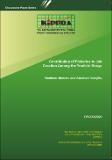| dc.date.accessioned | 2021-01-06T12:10:52Z | |
| dc.date.available | 2021-01-06T12:10:52Z | |
| dc.date.issued | 2020 | |
| dc.identifier.uri | http://repository.kippra.or.ke/handle/123456789/2518 | |
| dc.description.abstract | Kenya has about 13.7 million youth accounting for 35.4 per cent of the total
population and constitutes 60 per cent of the total labour force of which 10 per
cent are directly participating in the agricultural sector. Considering the number
of new labour market entrants, some 300,000 youths are left behind every year.
The maximum sustainable yield of Kenya’s marine and coastal waters, which is
majorly for commercial fishing is between 15,000 and 300,000 metric tonnes. The
current production level is only about 9,000 metric tonnes per annum showing
that they are under-exploited. Full exploitation of these resources will increase
production hence increasing contribution to GDP and employment creation
among youths. This study aimed at exploring the potential of job creation among
the youths in Kenya by mapping fisheries value chain, identifying constraints
to full exploitation of the sector, assessing employment creation potential and
assessing labour skills gap. The study adopted value chain approach using both
quantitative and qualitative analysis. Employment elasticity of the sector was
estimated. | en |
| dc.language.iso | en | en |
| dc.publisher | The Kenya Institute for Public Policy Research and Analysis (KIPPRA) | en |
| dc.relation.ispartofseries | DP/233/2020 | |
| dc.subject | Fisheries Sector | en |
| dc.subject | Job Creation | en |
| dc.subject | Sectoral Skill Gap | en |
| dc.subject | Commercial Fishing | en |
| dc.subject | Labour Skills Gap. | en |
| dc.title | Discussion Paper No. 233 of 2020 on Contribution of Fisheries to Job Creation Among the Youth in Kenya | en |
| dc.type | KIPPRA Publications | en |
| ppr.contributor.author | Munene, Bonface & Wanjiku, Abraham | |

